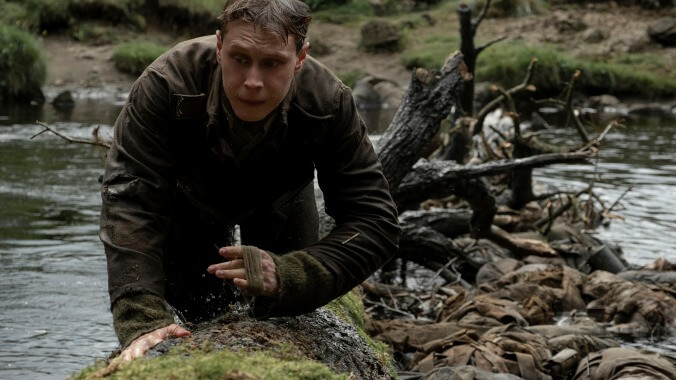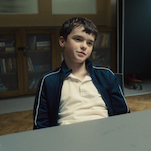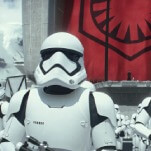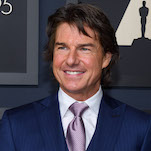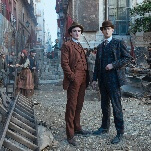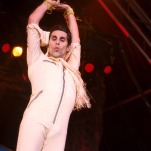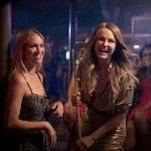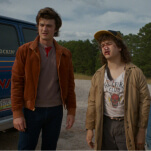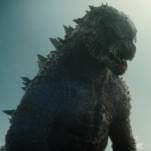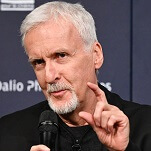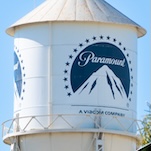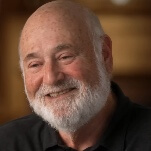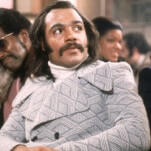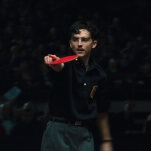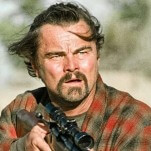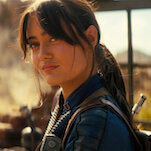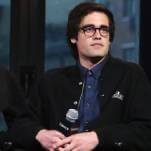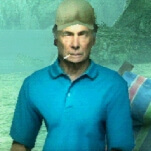Photo: Universal Pictures
Ever since Saving Private Ryan turned the invasion of Normandy into a you-are-there spectacle of death and panic, war movies have staked an uneasy middle ground. Most of them, working in the shadow of Steven Spielberg’s groundbreaking epic, now want to be unromantic depictions of how hellish the battlefield really is, while at the same time still functioning, in some capacity, as thrill rides. 1917, from American Beauty director (and recent 007 handler) Sam Mendes, takes the ride aspect of that equation to a new extreme. Condensing the danger of the first world war into a narrow sliver of space and time, the film essentially bills itself as the first combat picture to unfold via a single, unbroken shot. Logistically, it’s of course far from that—like almost every ostensible one-take experiment going back to Alfred Hitchcock’s Rope, 1917 finds places to make invisible cuts, to say nothing of a very visible mid-film smash to black. All the same, the effect is approximately as intended: For one mostly continuous, feature-length stretch, we’re sent racing through war-torn Europe, our gaze rarely averted by the artificial fissure of editing. It’s basically WWI: The VR Experience—a guided tour of war’s horrors and hardships.
The premise actually vaguely recalls Private Ryan, hinging as it does on a kind of relief mission in rural, battle-rocked France. In this case, however, the platoon is even smaller: It’s just two British soldiers, Blake (Dean-Charles Chapman, who played Tommen on Game Of Thrones and Billy Elliott on the West End) and Schofield (Captain Fantastic’s George MacKay). In the film’s opening minutes, and in the first of its slightly distracting star cameos, these two young men are handed an urgent order by a general (Colin Firth). Aerial photography has revealed that the Germans, believed to be in frantic retreat, have actually refortified and sprung a trap for the advancing British troops. The attack must be aborted—and Blake and Schofield only have a few hours to travel a few miles across the treacherous terrain and deliver the message to the superior officers leading the charge. Among the 1,600 men walking into an ambush is Blake’s older brother, which is of course why he’s been selected. (Schofield, picked at random by Blake before either men knew the daunting ordeal to which they’d be assigned, has no such personal stake.)
Crawling nervously out of the crowded trenches, the two make their way over no man’s land, past rotting human and horse corpses, through unstable underground tunnels and across vast meadows, into abandoned barns and bombed-out cities—a perilous journey captured, again, by a camera that appears to never stop rolling. Its movements are orchestrated by the great cinematographer Roger Deakins, stepping a little out of his comfort zone—he’s always been more of a master of composition than duration—and into Emmanuel Lubezki’s showboating Steadicam wheelhouse. There are some truly spectacular… well, not shots exactly, as that implies breaks in the action, but certainly moments. Take, for example, a dog fight that gets way too close for comfort, the men’s depth perception failing to properly prepare them for impact. Or Deakins playing to his strengths with a nightmarish nighttime sprint through the ruins of a town, massive flames creating shafts of apocalyptic light and expanding shadow. Not that 1917 is all shock and awe. In fact, it largely forgoes large-scale combat in favor of ominous stretches of silence and stillness, punctured by miniature crucibles: a hand caught in barbed wire, a trip wire in danger of being tripped, the crossing of a collapsed bridge.
Marshaling hundreds of extras and integrating sophisticated digital effects into extremely complicated setups, 1917 is an undeniable feat of planning and execution—the kind of painstaking technical achievement you watch and think, “Wow, they really pulled that off, didn’t they?” And yet the film isn’t immersive, exactly. Though the shooting strategy is meant to lock us into a present tense, the physical and emotional reality of a life-and-death predicament, it often does something close to the opposite, the sheer elaborateness becoming almost a distraction. The virtuosic set-pieces, stitched together into a facsimile of uninterrupted movement, draw great attention to themselves, commanding the audience to constantly marvel at them and think about the labor that went into their herculean realization. The cuts may be invisible, but the camera movements definitely aren’t. You could say that the stunt comes at the expense of the movie. Less charitably, you could say the stunt is the movie.
Thing is, 1917 plainly intends to be more than just an exercise in make-your-jaw-drop filmmaking prowess, more than the Call Of Duty play-through it occasionally suggests. Mendes, in a first, co-wrote the screenplay, dedicating it to a relative who died in combat, and one can detect the aspirations to an overwhelming emotional experience in the bombast of Thomas Newman’s grandiose score. (It’s just the latest example of Mendes farming out sentiment duties to his favorite composer—a tact he’s been taking since his two-decade-old debut, American Beauty.) But for that blitzkrieg on the heart to succeed, 1917 might require slightly more developed personalities. As written and played, Schofield and Blake are essentially bodies in motion, not characters. There’s some sense to the decision; who has time to express themselves, after all, when every minute is a desperate scramble to survive? And at least depicting the men as blank slates largely spares us tediously expositional conversations and the dramatic motivations of tortured backstories. But it’s hard to totally invest in the plight of these frazzled grunts when they’re both filmed and characterized like video-game avatars, guided from one “level” to the next.
The most common defense of shooting a movie in this masochistically difficult manner is that it enhances the urgency of the material. Yet 1917 proves curiously inconsistent in that department; a couple years after the dazzling Dunkirk, so wired to time that it worked a literal ticking into its soundscape, here’s a war movie that never properly establishes its race-against-the-clock timetable, or even asks its beleaguered troops to always keep the looming deadline on their minds. Ultimately, the film’s one-shot gimmick does perhaps work as a metaphor. In so much as 1917 has a point beyond impressing us with the staggering effort that went into its creation, it may be a mournful acknowledgement of war as a self-perpetuating machine, the means becoming the ends as enormous sums of money, time, and energy are sucked into its grinding gears. What better way to express that idea than through a movie that wears its own consumption of resources like a medal of honor? By the end, 1917 has positioned itself as a salute to the sacrifices of those who died for their country. Mostly, though, it comes across as a monument to itself.
